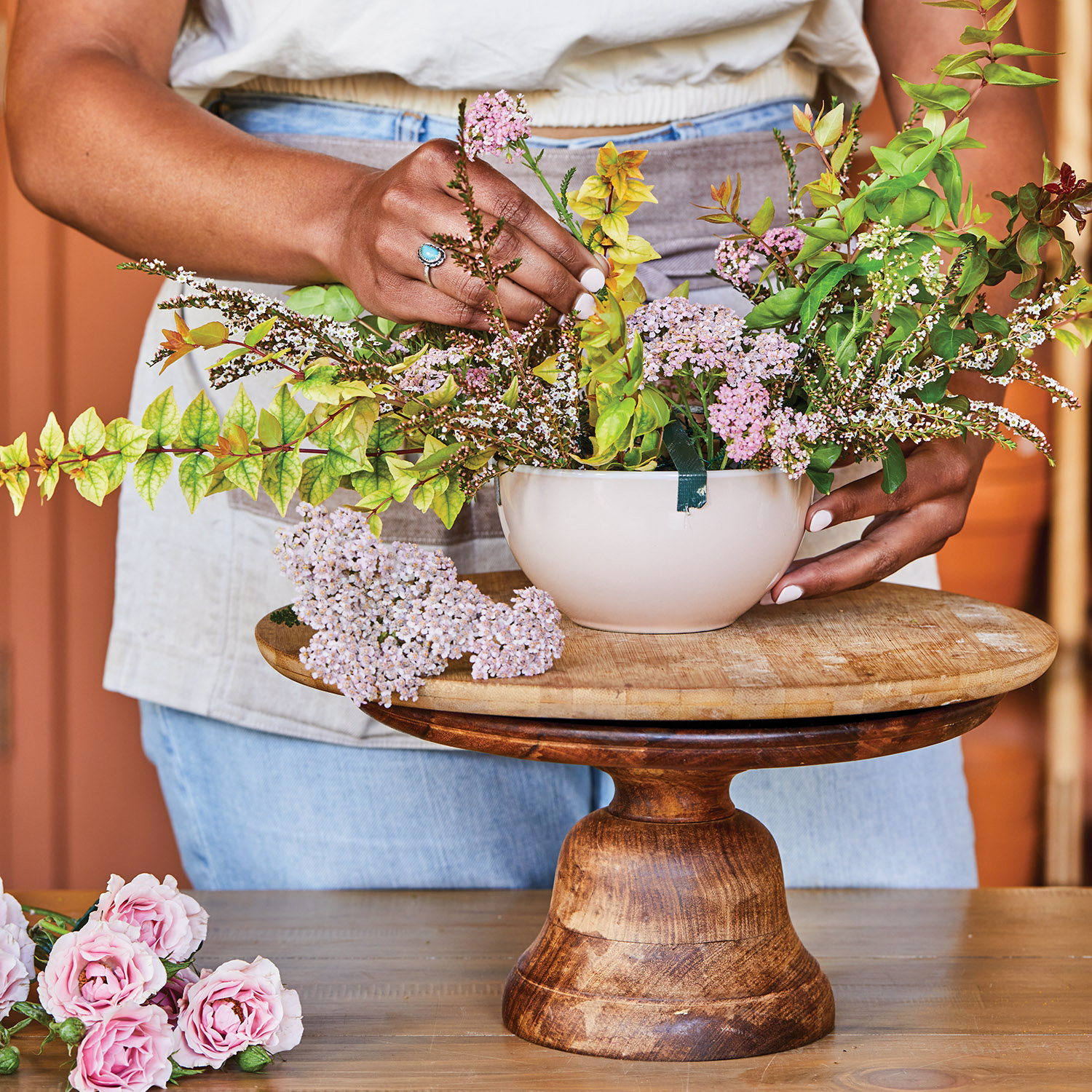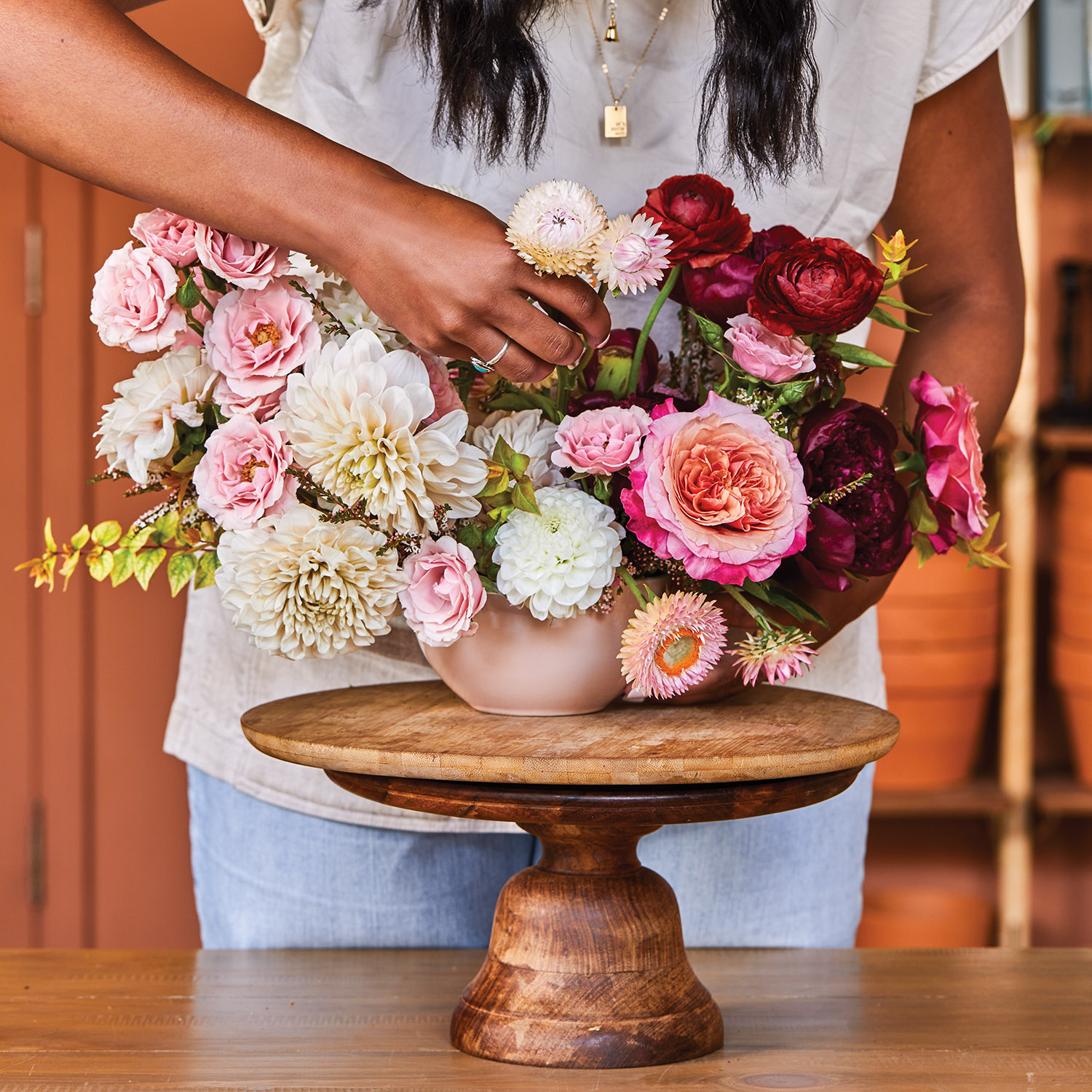
Left to right: Lauren, Callie, and Leah Palmer
The Palmer sisters, eighth-generation Oklahomans, each came to flowers on their own individual paths, but they all agree that the seeds of floral joy were planted early in their lives. The three women grew up exploring their grandparents’ garden and picking wildflowers, which they arranged and experimented with at the kitchen table. In college, Lauren enjoyed displaying her arrangements of fresh flowers in her apartment, and friends took notice. “They began asking me to create designs for their weddings,” she says. As the requests increased—some from people she didn’t even know—Lauren realized she needed assistance, so sister Leah left her teaching position and stepped in to help.
Ironically, the two sisters had always hoped to open a business together and had discussed ideas for a bookstore. However, when floral demands kept pouring in, they shifted gears to launch The Wild Mother Creative Studio in 2015, eventually opening a storefront and studio in the Arts District in downtown Oklahoma City. Soon after, the youngest Palmer sister, Callie, joined the team.

The sisters create floral designs they like to describe as “story-driven.” Every event they plan—from lavish weddings to intimate affairs—is a unique reflection of their clients, created through the beauty of flowers. And the women specialize in more than celebrations. Through their storefront, they offer carryout arrangements and hand-tied bouquets, as well as the ever-popular floral workshops—both in person and online.
The talented trio behind The Wild Mother also emphasizes the healing power of flowers. Last year, they raised awareness and money to send flowers to honor those who died 100 years ago in the massacre of Greenwood, a once-thriving Black community in Tulsa, Oklahoma. The sisters used the hashtag #sendflowerstogreenwood on social media to spread the word. Other florists from around the country joined the cause to create floral installations for the Greenwood anniversary.
The success of that project led to more #sendflowersto movements from The Wild Mother. On their website, the sisters regularly update the people and places that followers can help shower with love through flowers. For the Palmer sisters, it’s all about the opportunity to “celebrate, remember, honor, grieve, and educate through our floral medium.”

- Peonies
- Strawflowers
- ‘Miyabi’ roses
- Yarrow
- Abelia branches
- Foraged greenery
- Lisianthus
- Dahlias
- Ranunculus
- Scabiosa
- Strawberries

Step 1 Choose a low, medium-size container, roll up a ball of chicken wire, secure with floral tape, and add water.

Step 2 Start to build your base with abelia and any other foraged greenery that has interesting texture and color. Be sure to insert at various angles for coverage and movement. Add sprigs of the yarrow. Group them in bunches for more impact.

Step 3 Add more weight to the arrangement by including dahlias in different sizes. These softer colors will provide a base for the brighter blooms. Make sure to add them at angles throughout.

Step 4 Cluster the lisianthus so they make a statement off one side of the arrangement. Position a single garden rose low in the arrangement as a focal point. Add the red peonies judiciously so they don’t overwhelm the whole group. Pop in a few strawberries for additional color. Use strawflowers, ranunculus, and scabiosa to vary the palette. Allow some strawflowers to dip downward at the base and some to float above
The Palmer sisters often look to the seasons and their Afro-Indigenous culture for inspiration. Here, the professed storytellers created a narrative around the changes from spring to summer that culminate with strawberry season and the Strawberry Moon, which is the June full moon. “Strawberries are very symbolic for indigenous people, as they are often used in ceremonies representing the renewal of life or blessings,” says Lauren.
By Alice Welsh Doyle | Photography by Laurey W. Glenn




